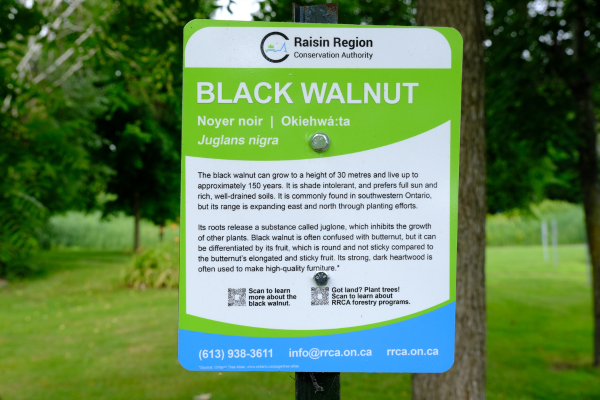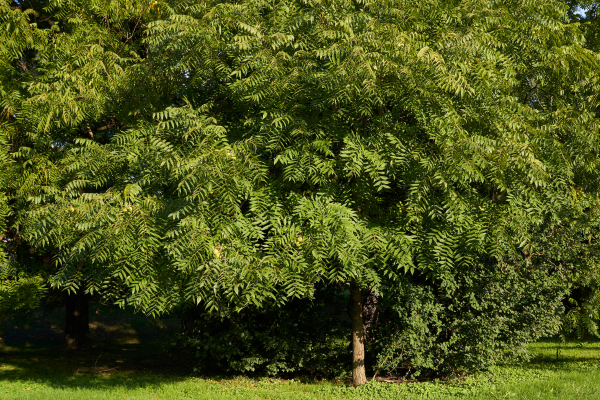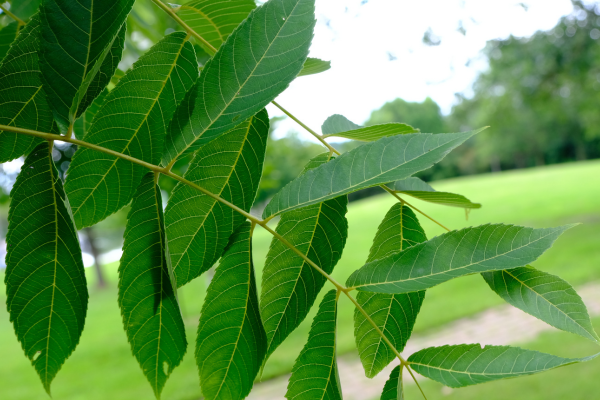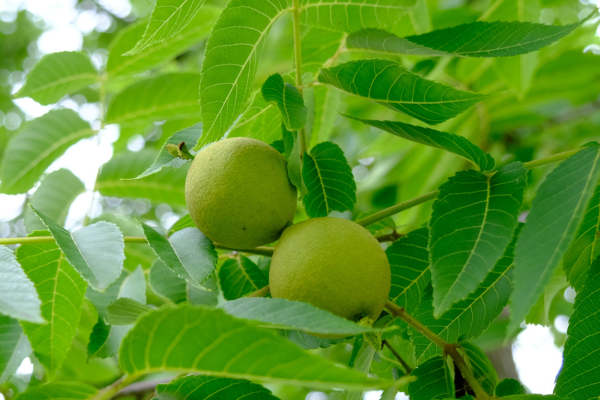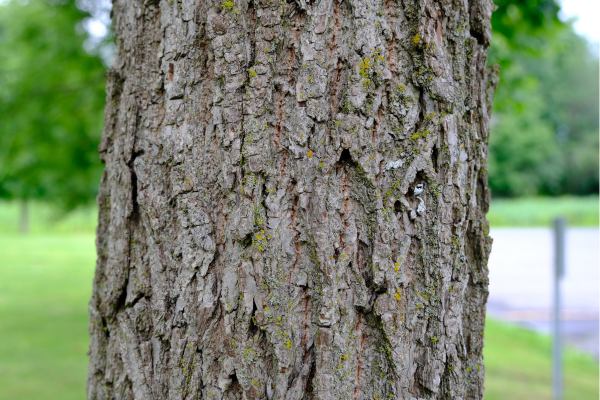Scientific name: Juglans nigra
Juglans = Combines the Latin word Ju for Jupiter, the Roman king of the gods and glans meaning “nut”. It is said that nuts, specifically walnuts, were considered food of the gods and eaten atop Mount Olympus.
nigra = Greek word for the colour black, referring to the dark colour of the bark and nut of the tree.
Black Walnut is easily recognized by its dark, thickly ridged bark and coarse branches. It is commonly found in the moist bottomlands of southwestern Ontario though it has started to expand further northeast. This is due to both planting efforts and through the help of local squirrels. The nuts and fruits of these trees are a good food source for squirrels and other wildlife species. Similar in appearance to butternuts, black walnuts can be told apart using its fruit, which is larger and rounder in shape than the smaller, elongated fruit of Butternuts.
Black Walnuts grow best in rich, well-draining and moist soils. They are shade-intolerant and need to be planted in full sun to survive. Black Walnuts can be found growing in pockets along forest edges, where there is an adequate amount of sunlight. Black Walnut can deter nearby competition thanks to a chemical compound released from their roots and decaying leaves. This chemical, called juglone, is a substance that can inhibit the growth of other plants. Never fear, however, as many of Ontario’s native species are unaffected by this substance.
Black Walnuts are renowned for their strong, dark heartwood, which is used to make high quality furniture, cabinetry, interior paneling, veneer, turned items and gunstocks. Be careful when handling the roots and seed husks as they contain compounds that can stain hands. The compound has been used for making a strong black dye. While the nuts of the tree are difficult to extract from their shells, they are high in fats and nutrients, compared to other wild nuts. They can be eaten plain, drizzled with honey, or used to flavour candy, cakes, and ice cream. Check out "Black Walnut Harvesting: From Start to Finish" for a closer look at what goes into harvesting walnuts.
Sources:
Indiana Nature LLC. 2023. Juglans cinerea - Butternut. [online] Available: https://www.indiananature.net/pages/taxa/Plantae/j/Juglans_cinerea.php
OMNR, 2022. Ontario Ministry of Natural Resources: Ontario Tree Atlas. [online] Available: https://www.ontario.ca/page/black-walnut
University of Guelph. Guelph Arboretum: Black walnut - Juglans nigra. [online] Available: https://arboretum.uoguelph.ca/thingstosee/trees/blackwalnut
USDA. SPECIES: Juglans nigra. Fire Effects Information System (FEIS). [online] Available: https://www.fs.usda.gov/database/feis/plants/tree/jugnig/all.html
%20938-3611%20info%40rrca_on_ca%20rrca_on_catrees%20(400%20%C3%97%20200%20px)%20(1).jpg)


